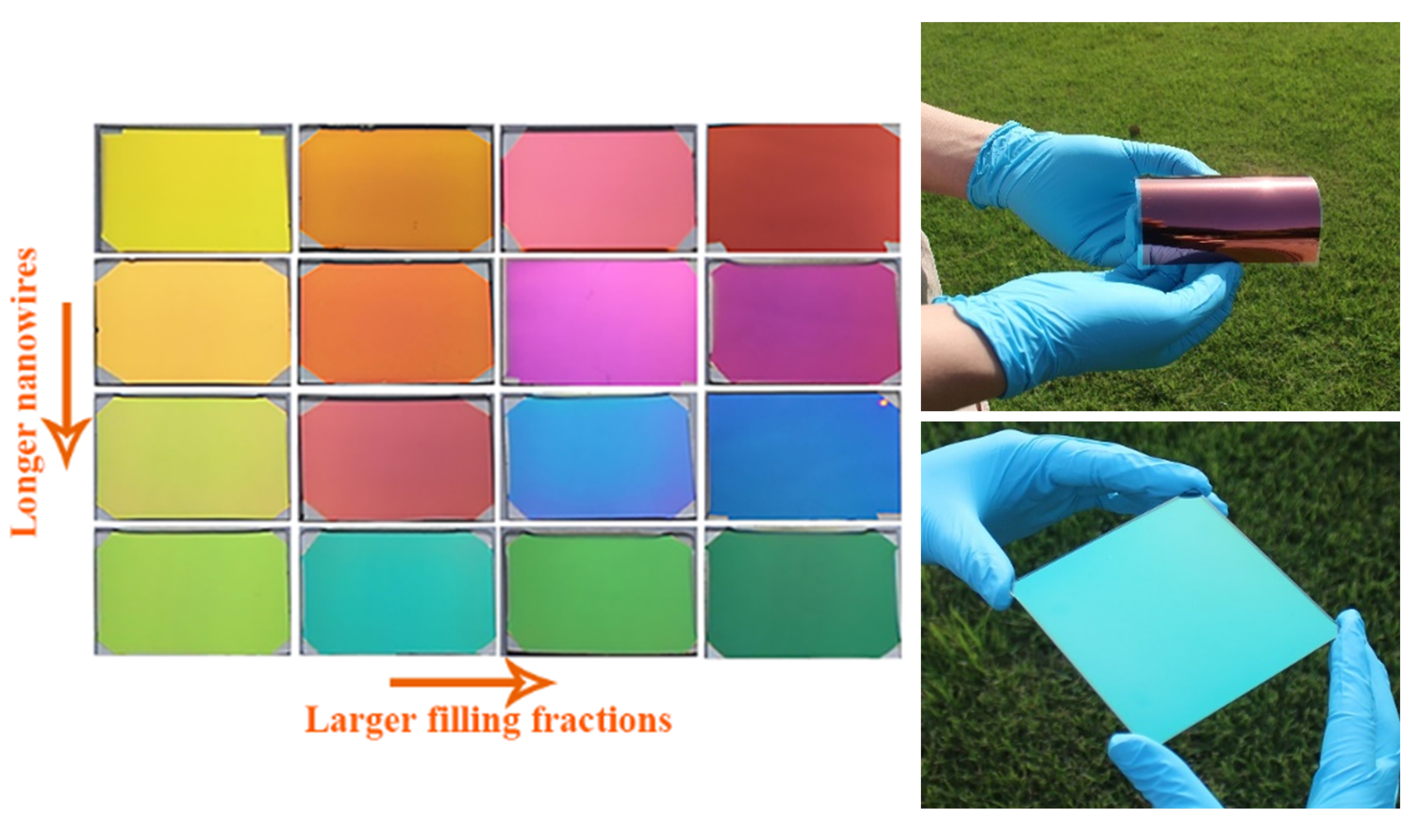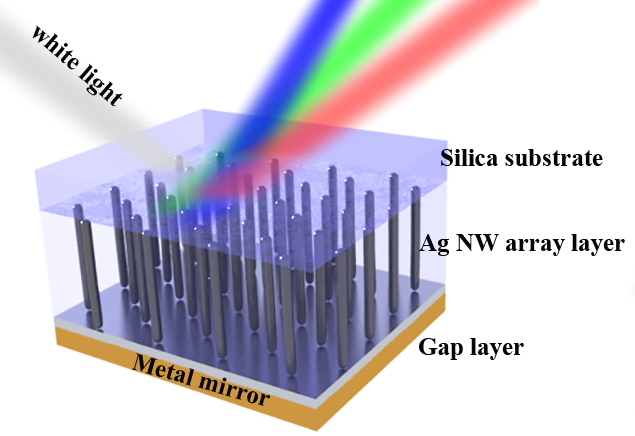A research group led by Prof. CAO Hongtao at the Ningbo Institute of Materials Technology and Engineering (NIMTE) of the Chinese Academy of Sciences (CAS), has developed a novel direct growth method of vertically orientated nanocavity arrays to generate plasmonic structural colors, which feature wide gamut, improved color saturation, excellent stability in ambient condition and mass-production scalability. The study was published in Advanced Functional Materials.
As an eco-friendly alternative to the traditional pigments and dyes, plasmonic colors boast high efficiency, long-term stability, and nonphotobleaching nature. Therefore, they play a vital role in emerging applications, like backlight-free displays, solar conversion, etc.
However, the facile fabrication technique of large-scale plasmonic structural colors with high coloring quality and steerable control freedom still need to be improved.
Researchers at NIMTE proposed the direct growth method of vertically orientated nanocavity arrays to create plasmonic structural colors. The improved stacked structure is comprised of an Ag nanowire array embedded-SiO2 metamaterial building block layer, a nanoscale-thick SiO2 gap, and a metal mirror. In addition, the whole stacked structure can be prepared via magnetron sputtering, which is an easy scale-up deposition technique. In particular, the nanoscale tuning on the structure feature size of the nanowire arrays was well coupled with the deposition parameters in a controllable and reproducible way.
By virtue of the additional introduction of Ag NP cermet layer, more resonance absorption was triggered. Thus the color gamut was further extended, even including the black color, along with the improved color saturation. In this way, the full-color palette was realized in red, green, blue (RGB) as well as cyan, magenta, yellow, black (CMYK) color space.
Moreover, whether on rigid or flexible substrates, large-area and uniform structural colors showed angle-insensitivity and coloration stability in air ambient.
The study may shed some light on generation technique, theory exploration, material fabrication evolution, and large-area applications of plasmonic colors.
The work was supported by the Ten Thousand Talents Plan of Zhejiang Province-Science and Technology Innovation Leader Project (No. 2018R52006), Zhejiang Provincial Natural Science Foundation of China (No. LY17E020012, LY19A040004), and the program for Ningbo Municipal Science and Technology Innovative Research Team (No. 2016B10005).

Fig. 1 Plasmonic color palette and large-area plasmonic structural color samples

Fig. 2 Schematic diagram of Ag nanowire-based plasmonic coloring structure
Contact
HUANG Ye
Ningbo Institute of Materials Technology and Engineering
E-mail: huangye@nimte.ac.cn

